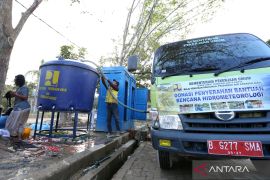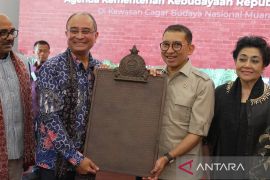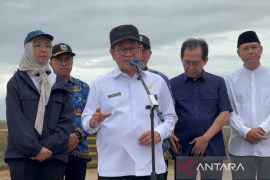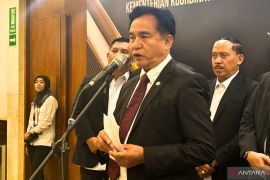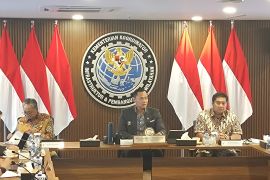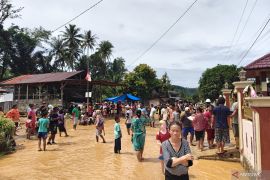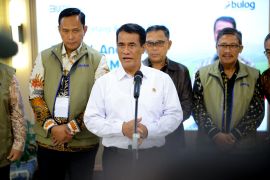On the occasion of World Day Against Child Labor, Indonesia launched the campaign to free children from labor.Jakarta (ANTARA News) - The Indonesian government is making all-out efforts, through a roadmap program, to free the country of child workers, which currently reach over 1.6 million, by 2022.
In order to achieve the target based on the roadmap, the Manpower Ministry has developed synergy with various parties, including regional governments and societal organizations, and launched a campaign to promote the free child worker program.
The program was also launched as part of the commemoration of the National Month Against Child Labor and World Day Against Child Labor on June 12. It involves the business community and society in which all stakeholders need to play a role and actively engage to free children from labor and also provide protection to them to uphold their rights and dignity in order to live, grow, develop, and participate optimally.
"We involve not only the central government but also regional administrations, businesses, and societal organizations," Maruli Hasoloan, the acting director general of Guidance and Supervision on Employment, Occupational Safety, and Health, had stated in Jakarta on Thursday (June 8).
Indonesias endeavor to end child labor in the country is part of its commitment to the convention of the International Labor Organization (ILO). It has ratified ILO Convention No. 138 of 1973 on Minimum Age for Admission to Employment, with Law No. 20 of 1999, ILO Convention No. 182 of 1999 on Prohibition and Immediate Elimination of the Worst Forms of Child Labor, with Law No. 1 of 2000, which have been adopted into Law No. 13 of 2003 on Manpower.
Hence, on the occasion of World Day Against Child Labor, Indonesia launched the campaign to free children from labor.
The campaign is expected to be effective in the handling and elimination of child labor, as it will help to break free from the shackles of poverty through a planned and systematic approach, which starts from improving the quality of human resources.
Moreover, several families have to work hard to make both ends meet. Children from such families are often compelled to work to help their parents make a living, though the ILO has set some clear norms about the age at which a child can start working.
To break free from the shackles of poverty, the government should improve the quality of its human resources by withdrawing children from workplaces and sending them to schools.
"We must equip Indonesias human resources, especially our children, including child laborers, with good education and skills, so that they can compete with foreign workers, who will enter Indonesia indefinitely, as a consequence of the agreement that has been established to realize the era of globalization," Hasoloan pointed out.
Thus, the government has set to free the country of child labor by 2022 and also declared the program of Child Labor-Free Zone in various industrial areas across Indonesia.
All companies in the industrial zones are strictly prohibited from recruiting and employing child laborers in any areas of work.
To this end, the government has established the National Action Committee through Presidential Decree No. 2 of 2001 on the National Action Committee for the elimination of the Worst Forms of Child Labor.
The committee has formulated guidelines for the implementation of national action plans for the elimination of the worst forms of child labor that comprises three phases: phase I in the 2002-2007 period, phase II in the 2008-2012 period, and phase III in the 2013-2022 period.
Although the first of the three phases started in 2002, the government has indeed been making efforts to withdraw children from their workplaces since 2008.
In 2008, the government had launched the program to withdraw child laborers from the work field, yet the target to make Indonesia free of child labor is a distant dream. It has to work all out to achieve its target of making the country free of child labor by 2022.
Data indicated that until March 2016, the number of poor people was still recorded at 28.01 million, or about 10.86 percent of the population, a slight drop from 28.59 million in 2015, or about 11.22 percent of the population. This means that a large number of poor families force children to work.
Moreover, since 2008 until the end of 2016, the government had only been successful in withdrawing 80,555 child workers as compared to the current figure (aged up to 17 years old) of about 1.6 million.
According to Law No. 20 of 1999, any human being until the age of 15 is considered to be a child and is prohibited from working. In case of jobs classified as hazardous work, this threshold is set at 18 years.
The program was launched by the government to reduce the number of child laborers and to develop the countrys "Family of Hope" scheme.
"During the 2008-2016 period, the government pulled out 80,555 child workers from their workplaces and sent them to schools through an assistance program," Director of Monitoring of Work Norms, Women, and Children Amri A. K. noted in Jakarta on Thursday (June 8).(*)
Reporter: Andi Abdussalam
Editor: Heru Purwanto
Copyright © ANTARA 2017
